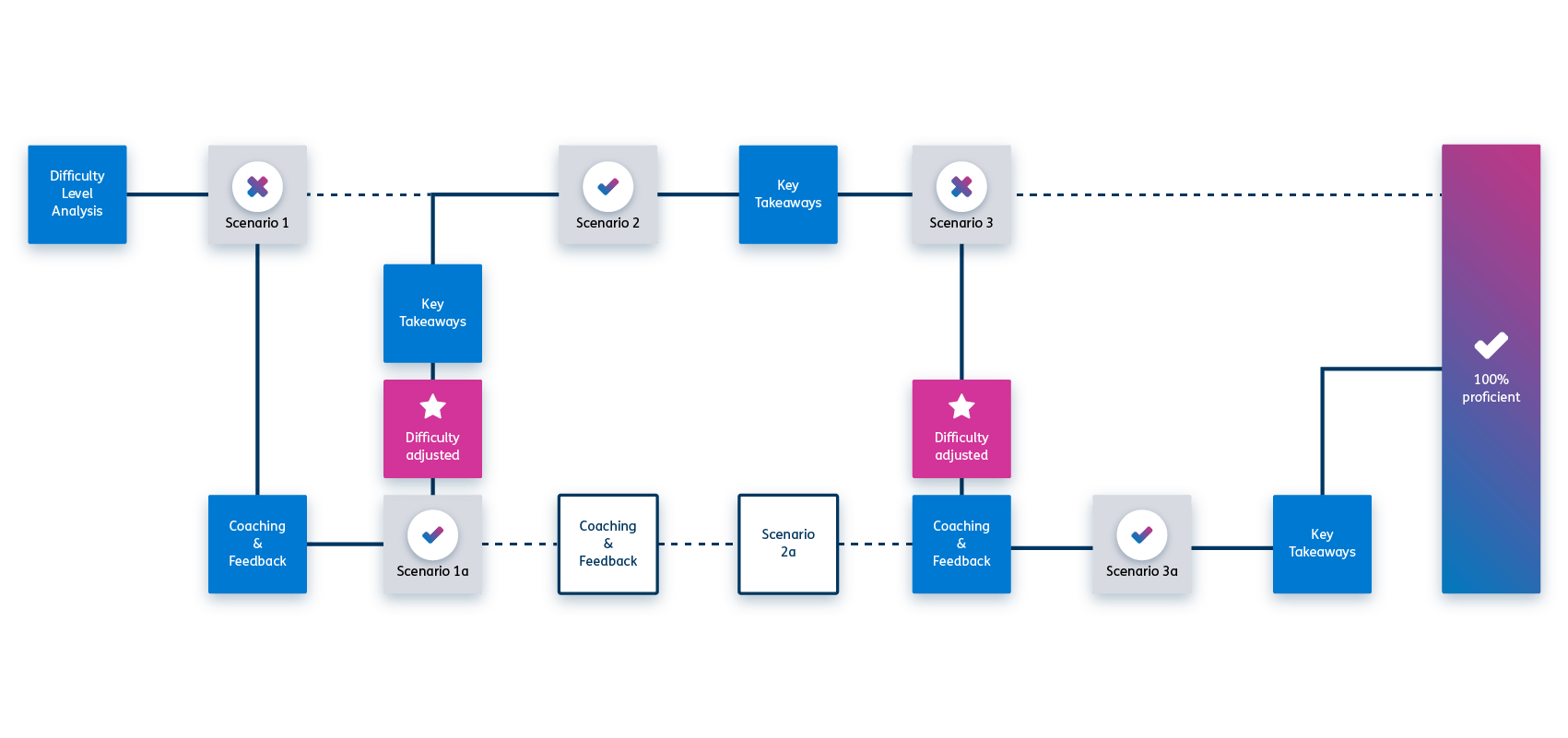
How we help you align your compliance program with the DOJ Guidance
September 9, 2024
Creating a DOJ-aligned compliance training program is a must-have for all organizations. By focusing on tailored training that leverages technology and behavioral psychology, compliance practitioners can enhance both employee engagement and compliance outcomes.
The good news is that you don’t need to implement major changes all at once or rebuild your training from scratch. Let’s take a look at how setting up the right environment for your education and training can give you a head start. You can build your compliance program to minimize organizational risk, reduce training seat time, and align your program with the DOJ Guidance.
What does alignment with the DOJ Guidance look like?
The Evaluation of Corporate Compliance Programs, commonly referred to as “the DOJ Guidance,” asks prosecutors to consider three key questions:
- Is the corporation’s compliance program well designed?
- Is the program being applied earnestly and in good faith? In other words, is the program adequately resourced and empowered to function effectively?
- Does the corporation’s compliance program work in practice?
Your training program should be robust enough to confidently answer the questions, yet flexible enough to constantly meet the evolving needs of your people. The most powerful way to do this is by taking a smarter approach to learner data.
The product and content teams at Learning Pool stay on top of changes to the DOJ Guidance. You can check out our whitepaper outlining “How to create a DOJ-aligned compliance training program”.
Learning Pool primarily provides assistance as a compliance training vendor, but our approach goes beyond traditional content offerings. We see what the DOJ looks at, and our teams have built courses that help you work smarter and utilize behavioral data to better strategize and implement your program. This isn’t something that every compliance vendor can claim they offer. Learning Pool brings you the environment, engaging content material, adaptivity, and a way to proactively gather behavioral data that makes smart compliance programs possible. Let’s dive into the details for how our solutions can help your compliance program align itself better with DOJ Guidance.
How does Learning Pool help you align with the DOJ Guidance?
1. Offering a right-sized library of courses for a variety of risk areas
Your compliance program needs to offer training that addresses the right topics. Our team curates a library of full-length adaptive courses, modules, and micro-assets so you can right-size your training to your organization. Some of our most implemented topic areas include:
- Anti-Corruption and Financial Crimes
- Cybersecurity, Data Privacy, and Business Records
- Ethics
- Fair Business Practices
- Harassment Prevention
Our courses work on any platform, so while we offer a dedicated compliance platform, you can integrate our adaptive courses anywhere. They’re also easily customizable to your organization’s policies and procedures. We maintain complete transparency for what our adaptive courses library looks like, and you can check it out in our Learning Pool Showcase of our Adaptive Compliance courses here.
2. Powering engaging learning experiences that are truly adaptive
It’s clear that the DOJ Guidance means that training programs have to go beyond just ‘checking the box’. One of the most innovative ways compliance practitioners achieve this is by implementing adaptive technology. A single well-developed adaptive course can cater to a diverse range of employees, providing unique training based on roles and responsibilities, real-life experiences, and applied knowledge. Adaptive learning goes beyond simple branching or offering different multiple-choice questions based on geography, job role, or other demographic data. When evaluating compliance vendors that claim to offer adaptive courses, it is important to understand what that actually means to them.
Here’s just an example of how adaptivity in a Learning Pool course actually works: First, difficulty level analysis—which occurs throughout the course—ensures that the learner is presented with an appropriate training scenario and activity, after which coaching and feedback is presented. Based on their performance in simulation, the course difficulty might be adjusted before the learner begins another scenario. As the training progresses, the learner will be leveled-up or leveled-down depending on how well they demonstrate mastery of the topic. The course ends when the learner achieves 100% proficiency.

3. Delivering compliance training that works smarter for your organization and employees
Compliance training isn’t a one-timer offer to employees, so use the right tools to help them become more adept in compliance topics. Your compliance training will become more effective as you evaluate year-over-year training performance, analyze operational and transactional data, and implement reinforcement tools when and where they’re needed.
With Learning Pool’s Intelligent Learning Paths, your compliance program can deliver targeted training with an understanding of a learner’s prior course performance. The lowest performing topics can be automatically presented to the learner 3-6 months after the initial training. Your compliance program can also reward perfect performance by removing learning experience completion requirements.
Intelligent Recertification differs from traditional test out quizzes which drop learners into a passive one-size-fits-all experience if they fail. With no tangible proof of learning taking place, test out quizzes reinforce the idea that training is a check-the-box exercise rather than an attempt to build an ethical and compliant workforce. Instead, Learning Pool can help you reduce seat time, ensure learner mastery of all the important topics, and provide actionable insight to prove efficiency and identify trends and opportunities.
How to prioritize aligning to the DOJ Guidance and lean into your experience
There are a number of challenges that only you as your organization’s compliance professional uniquely know: you know the appropriate level of risk for your organization, you know your people best, and you know how to reach them. It’s up to you to prove your compliance program works in practice. Rolling out the right courses for each risk area, deploying adaptive learning, and adding reinforcement tools and data layers can all help make this process feel more informed and targeted.
Education and Training is one of the Seven Elements provided by the Federal Sentencing Guidelines. But Learning Pool is more than just a compliance training vendor. We help you align your program with the DOJ Guidance with the smarter use of behavioral data and provide you with actionable insights that help your decision-making for the other six elements, too.
With adaptive compliance courses, you know you can go beyond just ‘checking the box’. If you want to know more about the DOJ Guidance, be sure to check out our whitepaper outlining “How to create a DOJ-aligned compliance training program”.
Got a learning problem to solve?
Get in touch to discover how we can help

